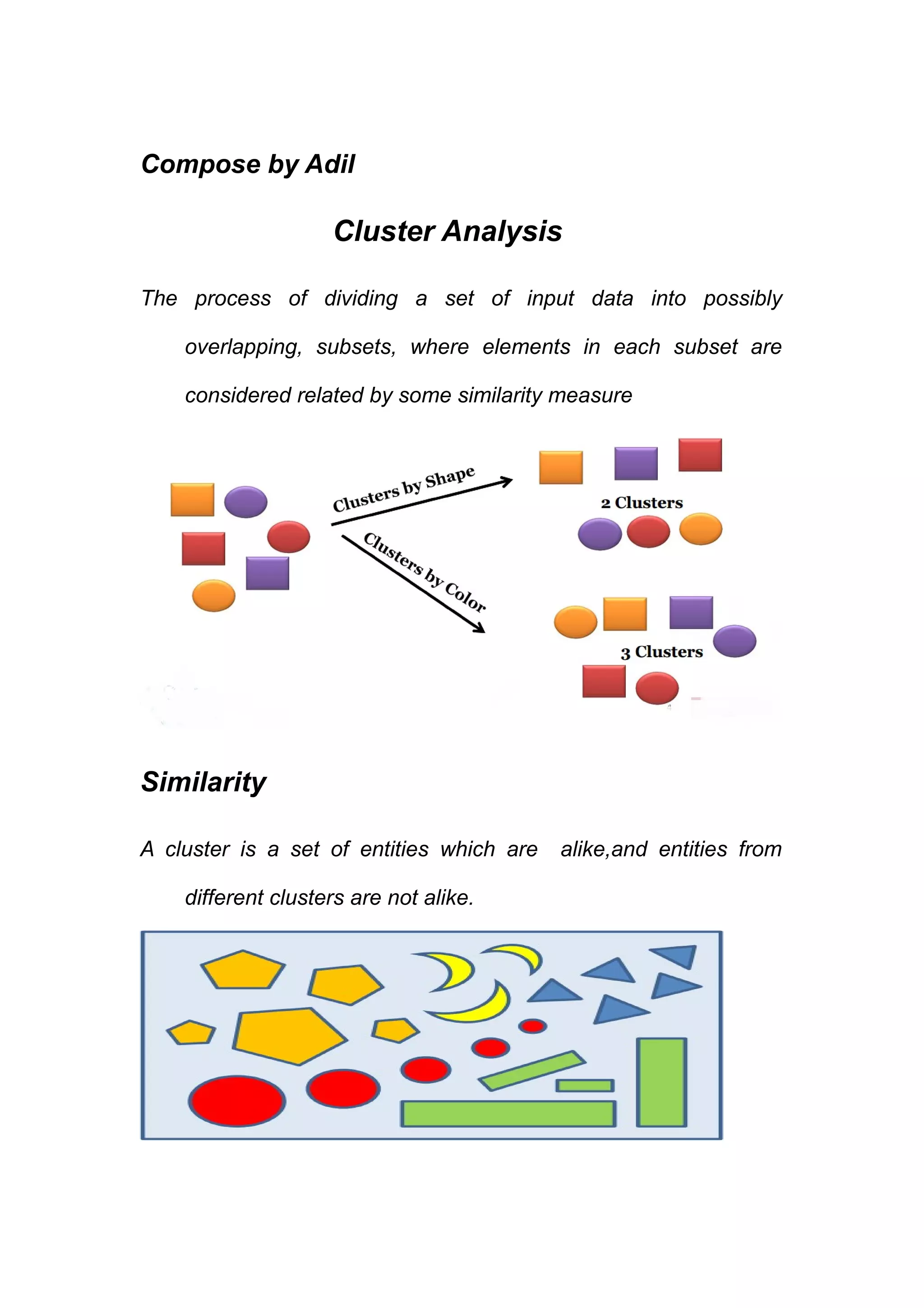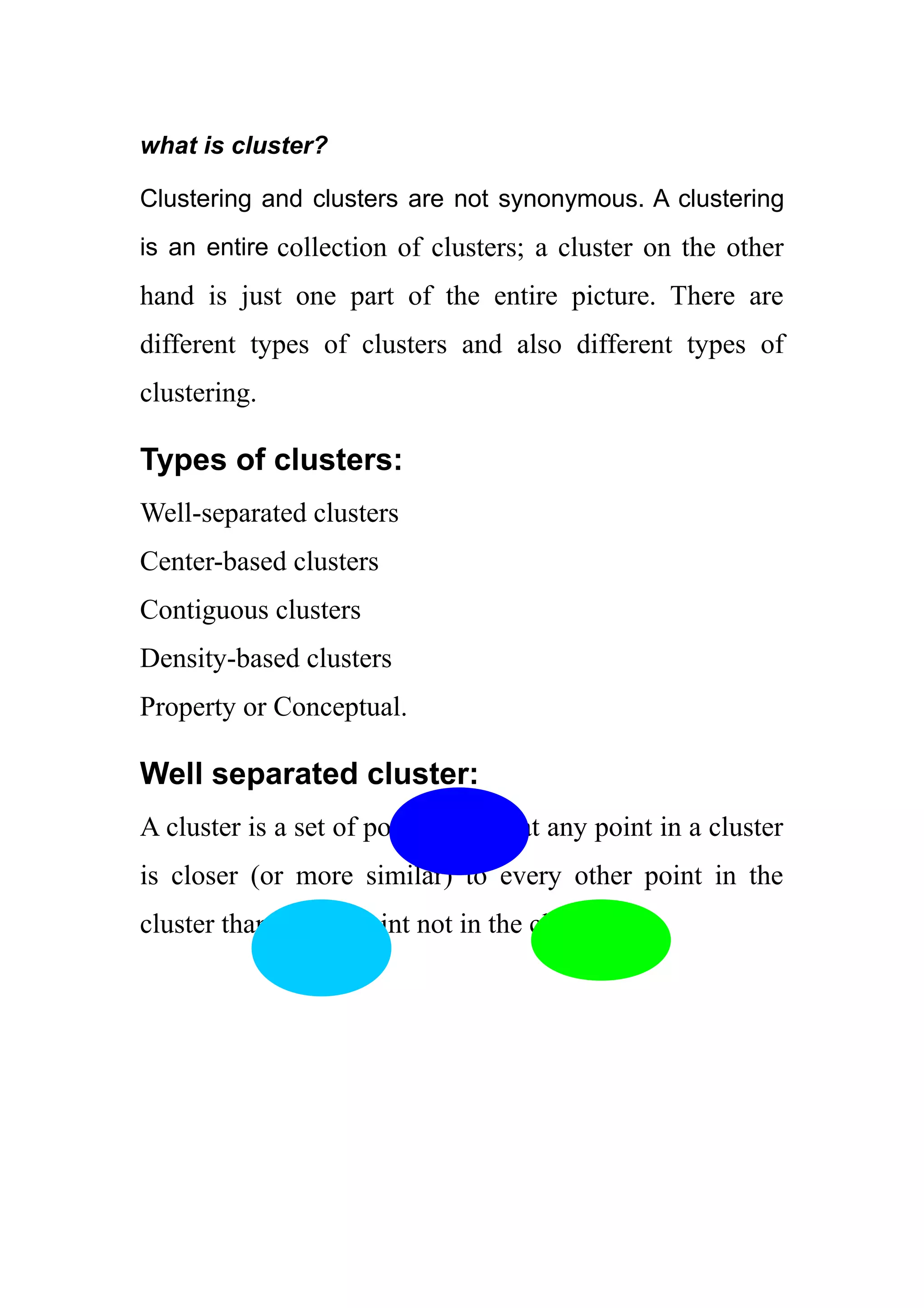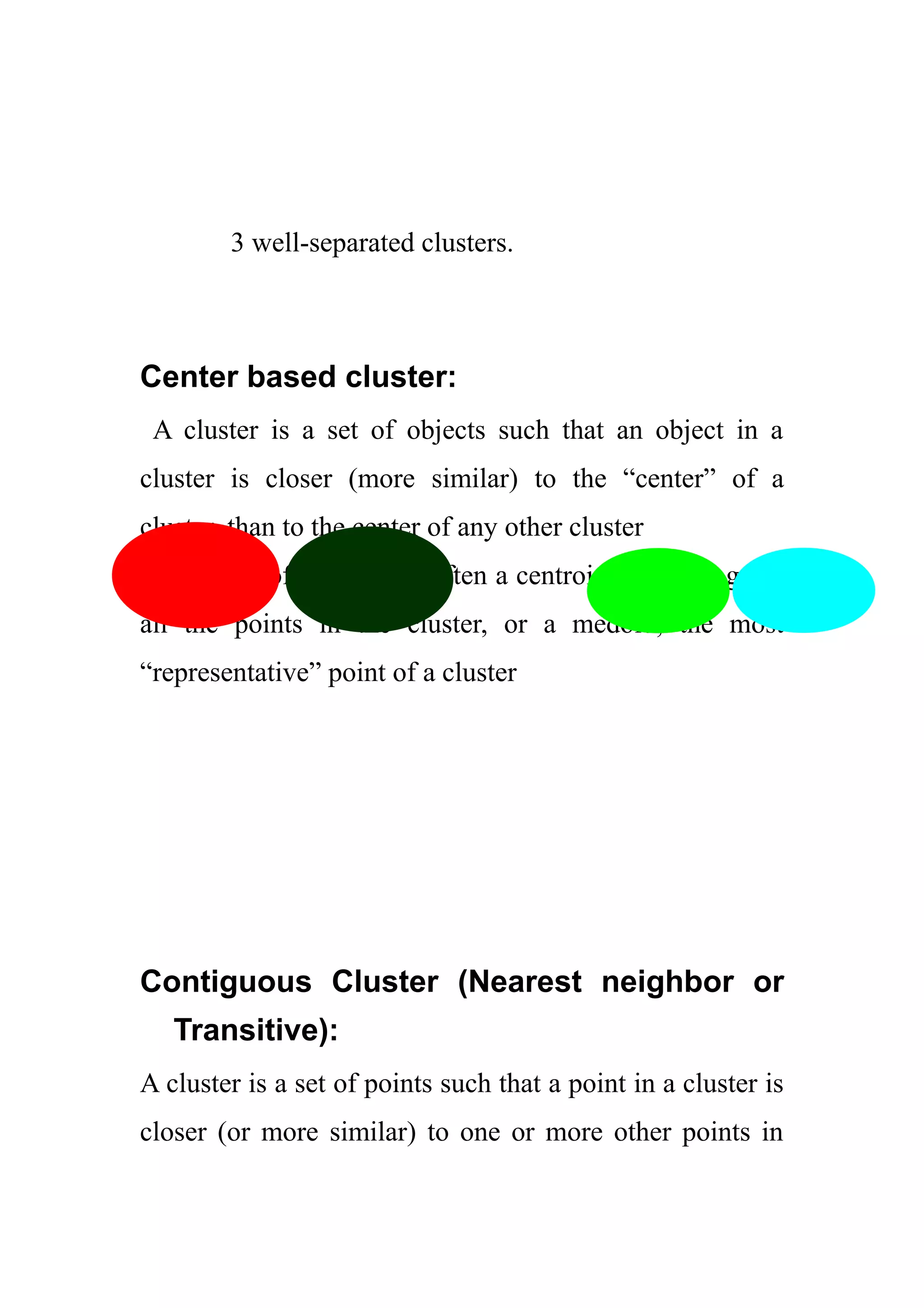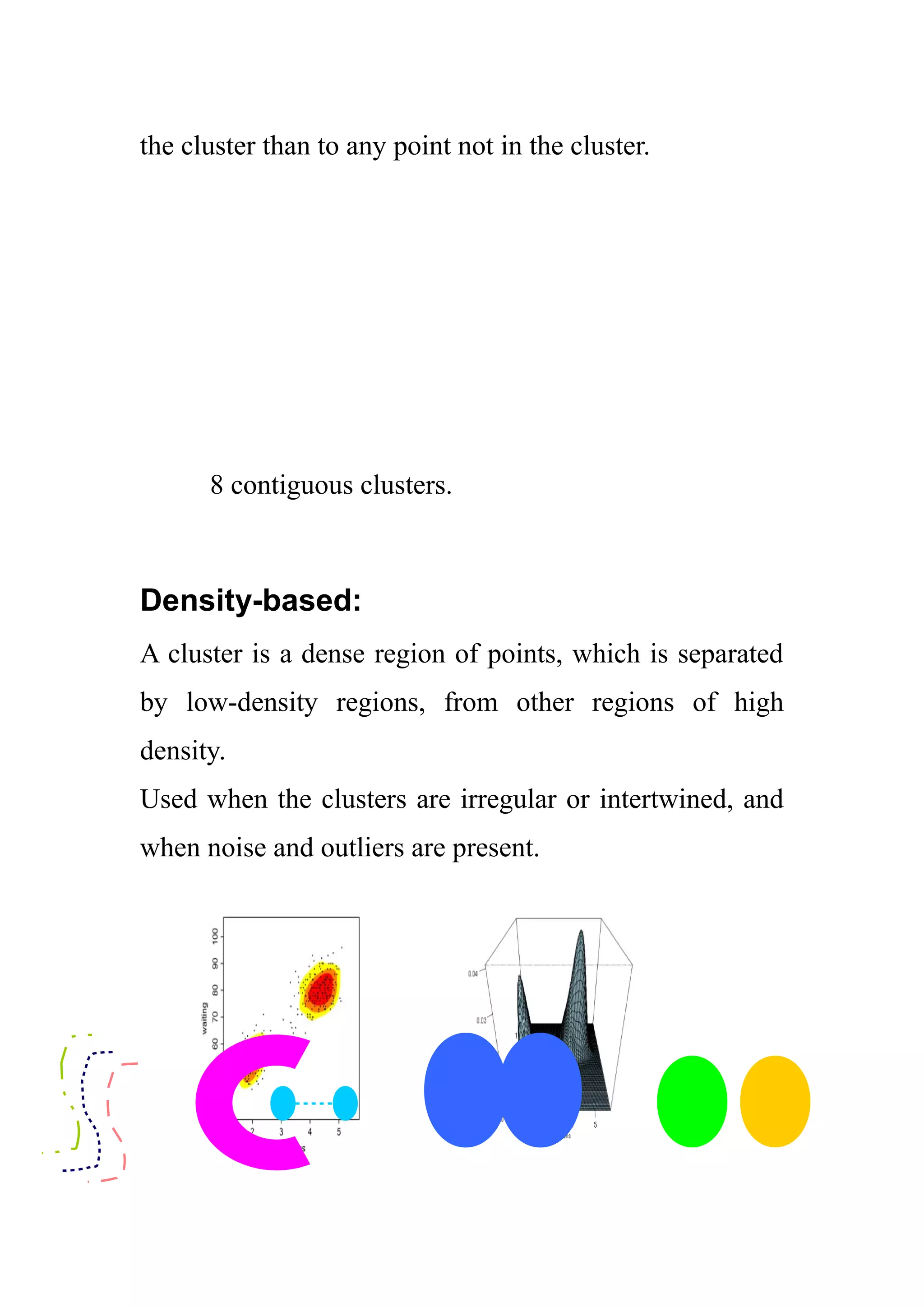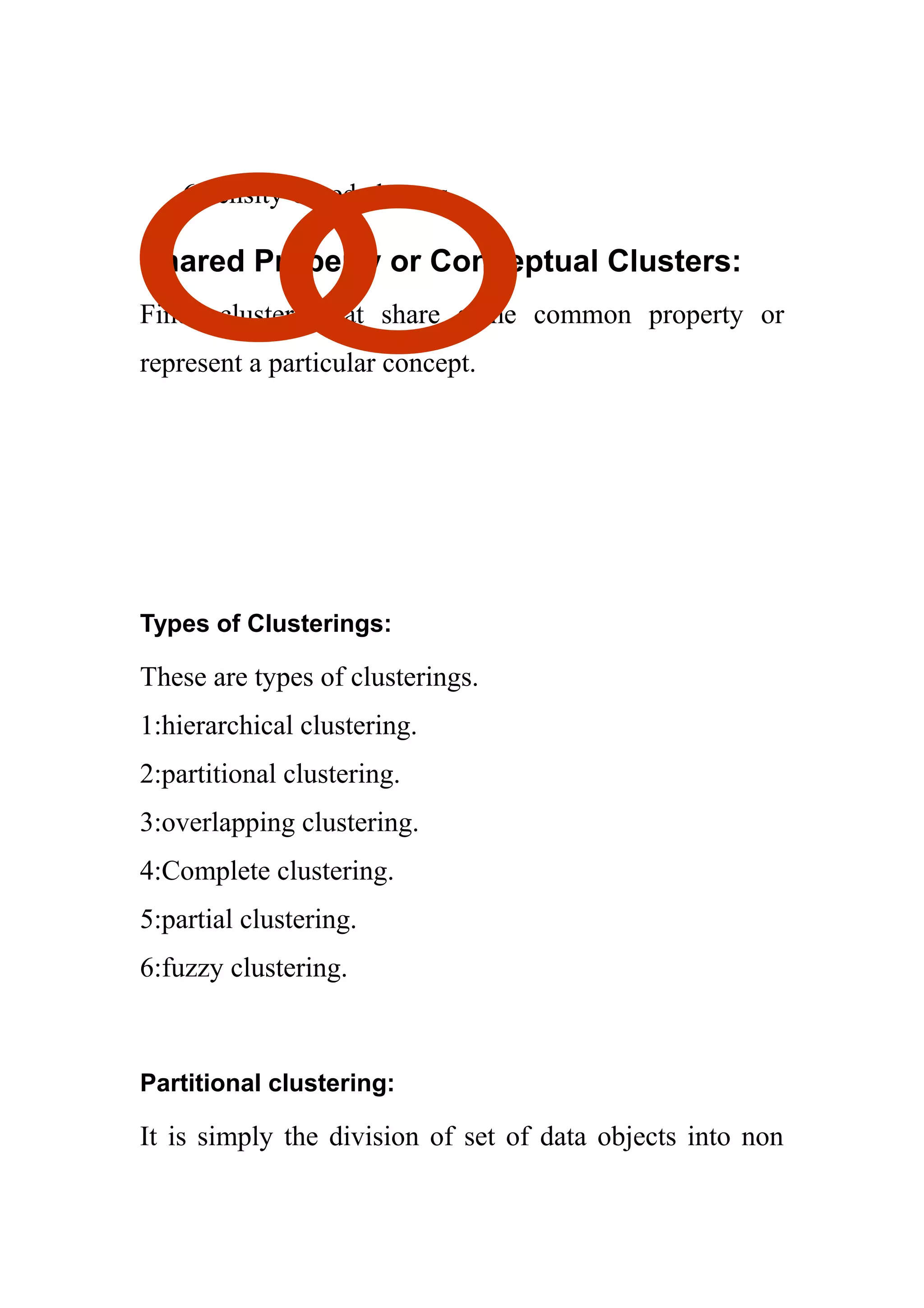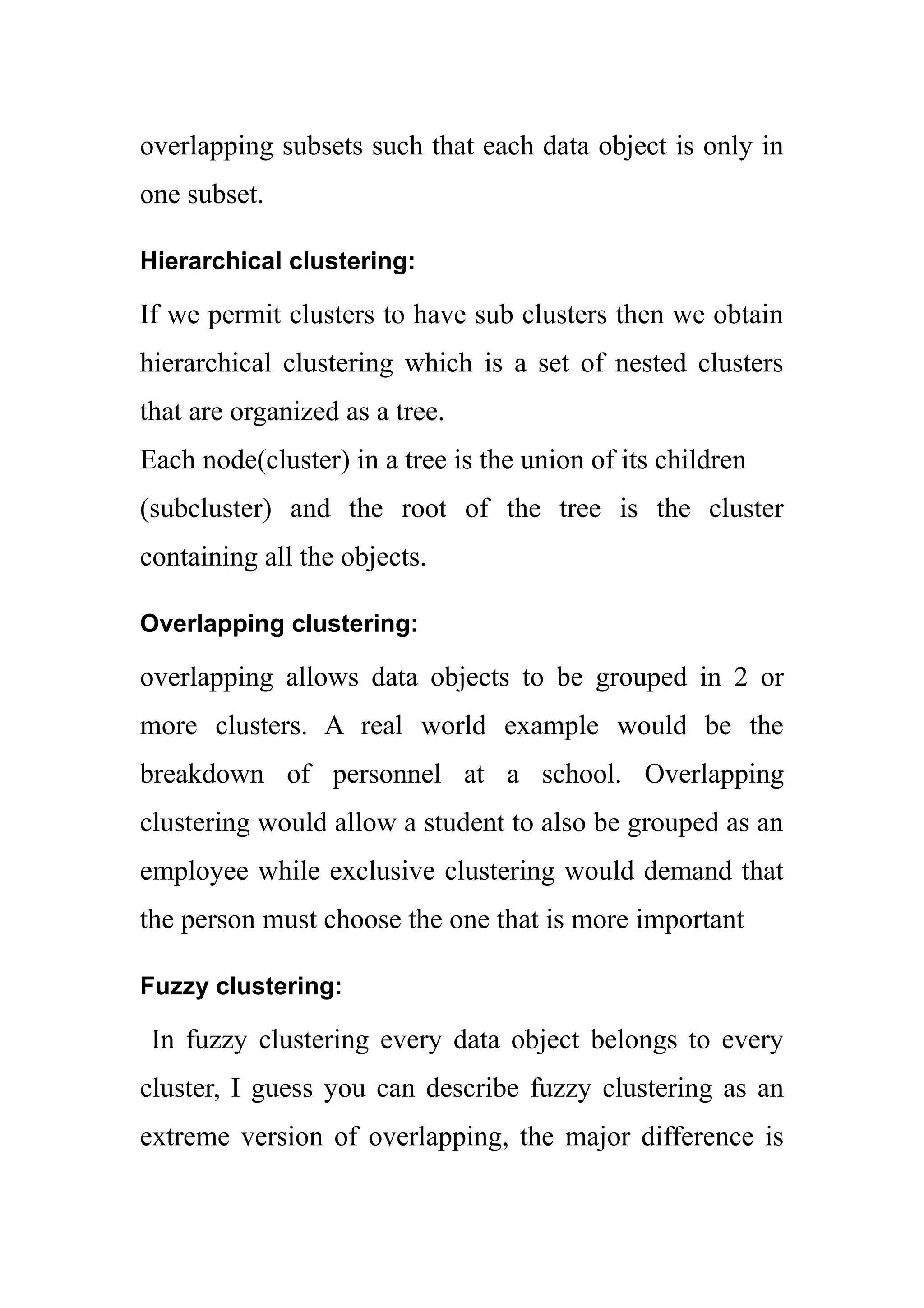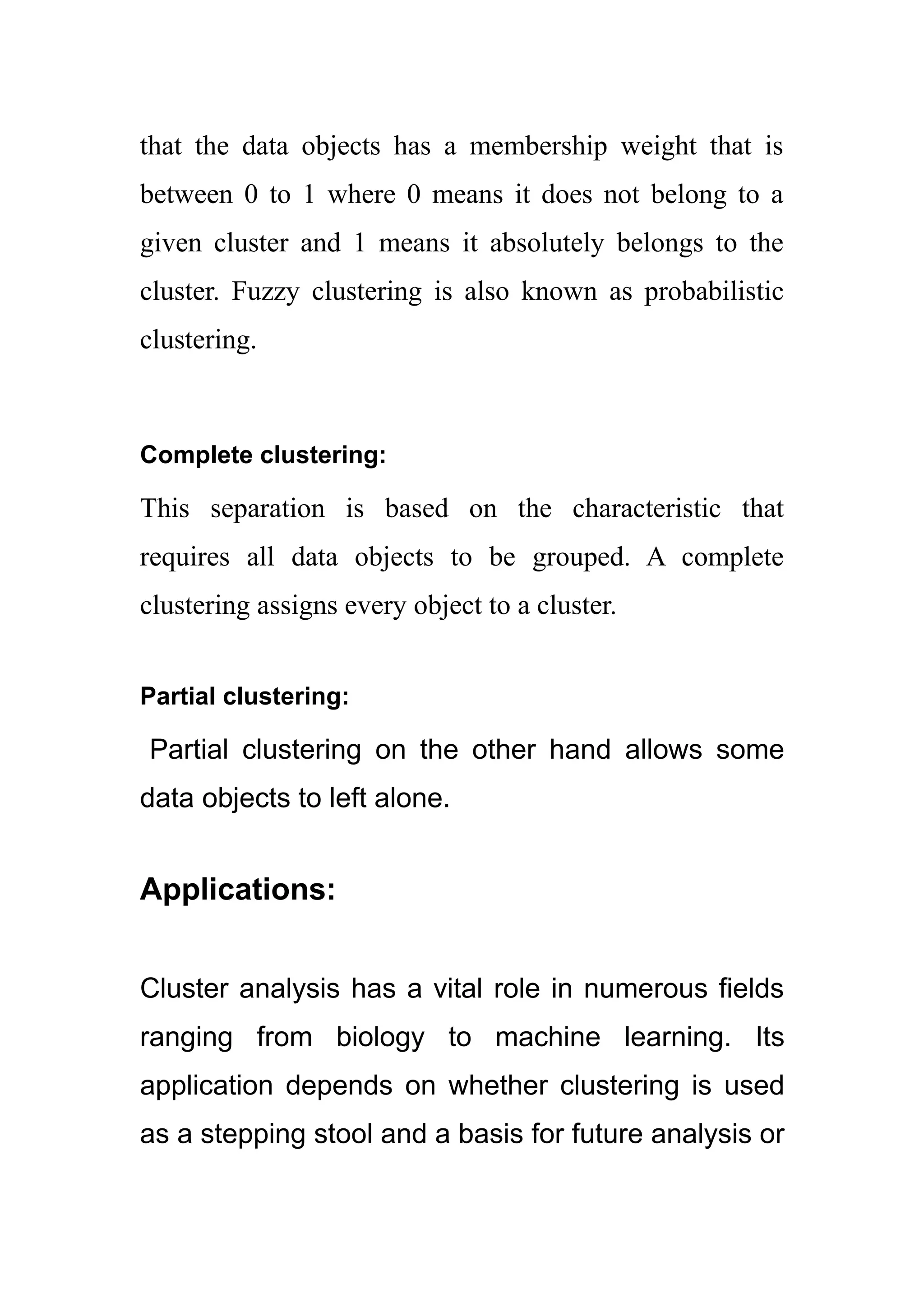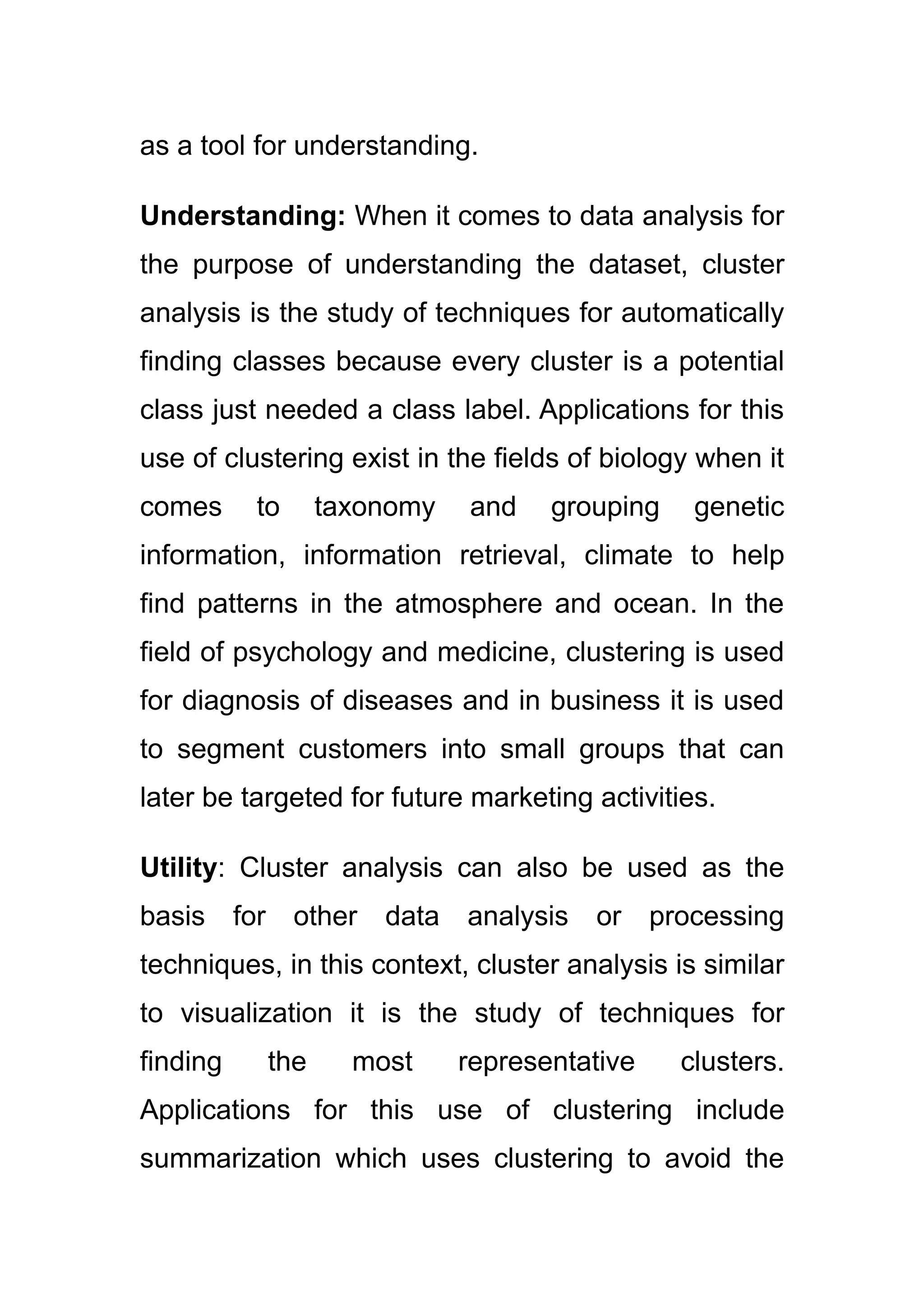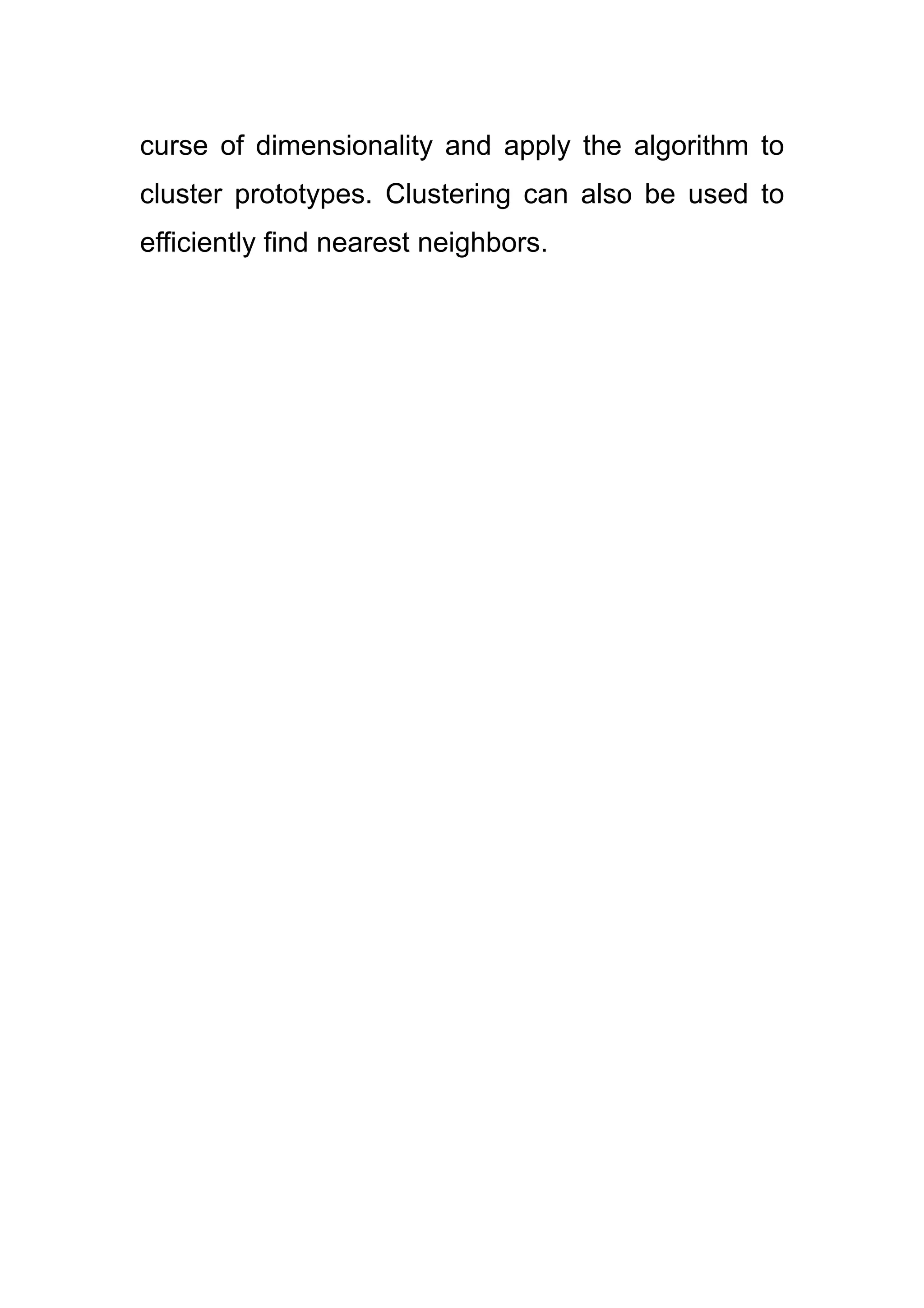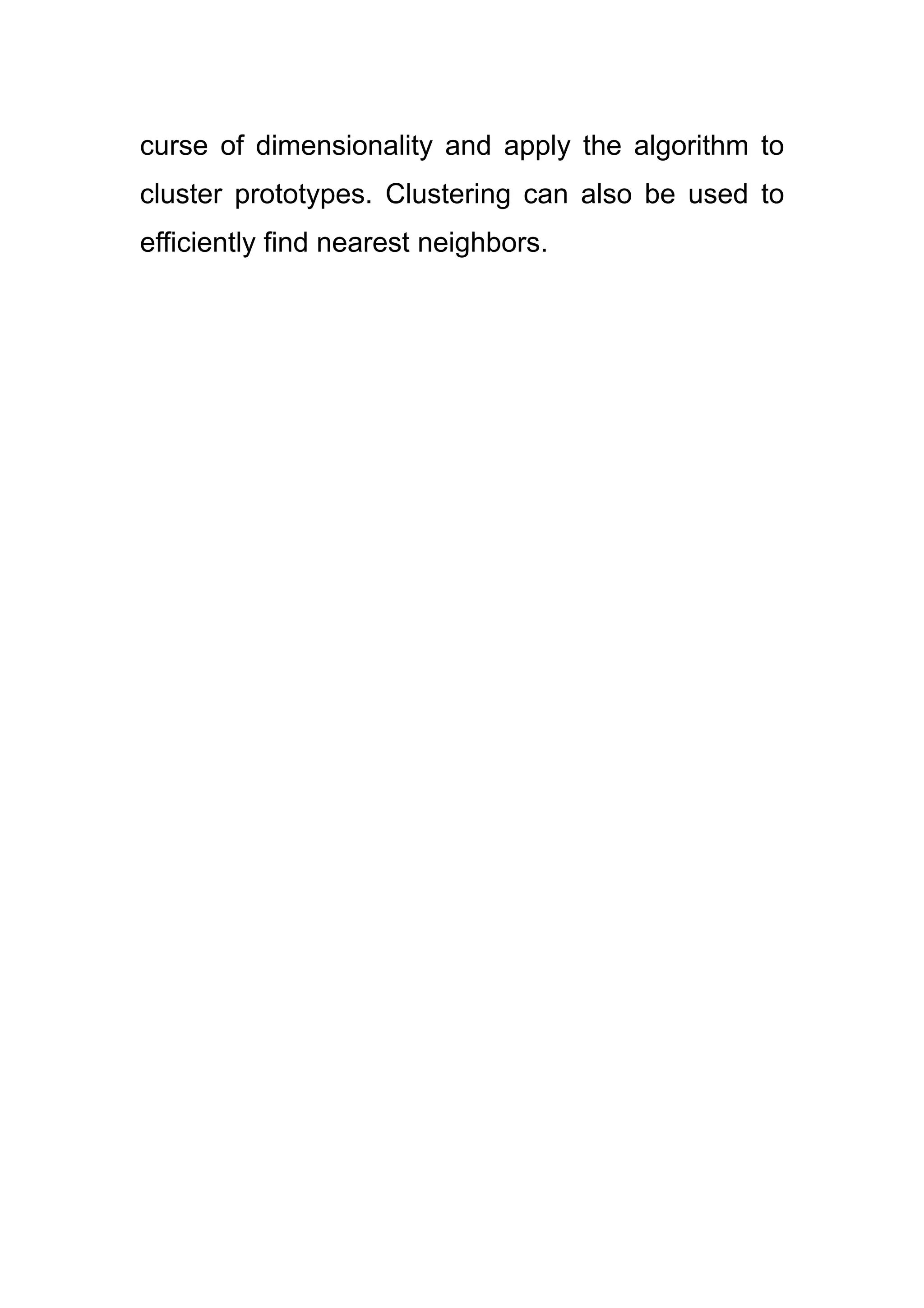Cluster analysis is the process of dividing data into subsets or clusters where elements within a cluster are similar to each other and dissimilar to elements in other clusters. There are different types of clusters such as well-separated, center-based, contiguous, and density-based clusters. Clustering algorithms can also be hierarchical, partitional, overlapping, complete, partial, or fuzzy. Cluster analysis has applications in fields like biology, information retrieval, climate analysis, psychology, medicine, and business for understanding patterns in data and grouping similar elements.
